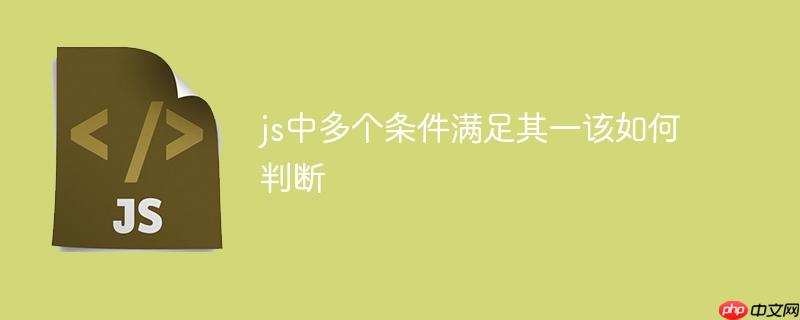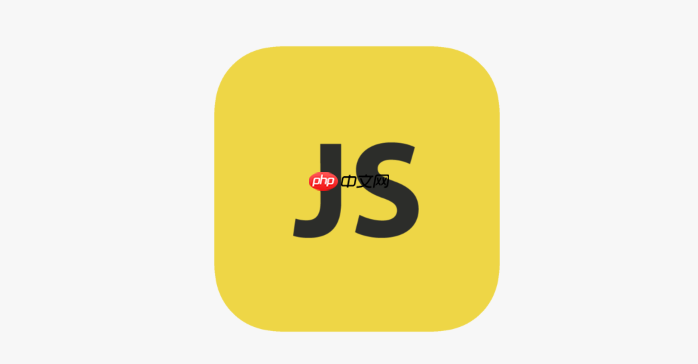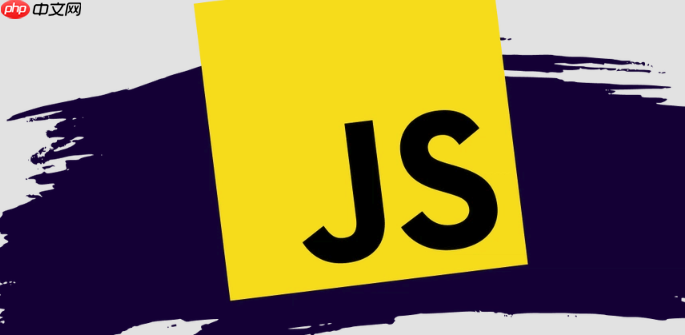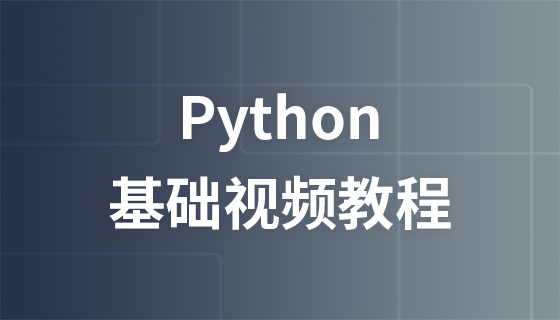在javascript中判断多个条件满足其一的核心方法是使用逻辑或运算符||,1. 使用||连接多个条件表达式,只要其中一个为真,整体结果即为真;2. 为提高可读性和维护性,可将各条件封装成独立函数,并通过一个检查函数调用这些条件函数;3. ||具有短路特性,若前面的条件已为真,则后续条件不再计算,适用于优化性能;4. 处理空值或未定义值时,建议使用===分别检查null和undefined,或使用== null进行简洁判断;5. 除||外,也可使用数组的some方法实现类似逻辑,即将条件存入数组并调用some判断是否存在为真的条件。

判断JS中多个条件满足其一,核心在于使用逻辑或运算符 ||。只要其中一个条件为真,整个表达式的结果就为真。

使用 || 运算符将多个条件连接起来。

当条件数量增多时,代码可读性会下降。可以考虑将条件封装成函数,提高代码的可维护性。

function condition1(x) {
return x > 10;
}
function condition2(y) {
return y < 5;
}
function condition3(z) {
return z % 2 === 0;
}
function checkConditions(a, b, c) {
return condition1(a) || condition2(b) || condition3(c);
}
console.log(checkConditions(11, 6, 7)); // true (condition1 is true)
console.log(checkConditions(9, 4, 7)); // true (condition2 is true)
console.log(checkConditions(9, 6, 8)); // true (condition3 is true)
console.log(checkConditions(9, 6, 7)); // false (all conditions are false)
这种方式的优点在于,每个条件的逻辑都独立存在,方便修改和测试。如果条件特别复杂,还可以将条件函数进一步拆分成更小的函数。
|| 运算符的短路特性是什么,如何利用?|| 运算符具有短路特性。这意味着,如果第一个条件为真,后面的条件就不会再被计算。这在某些情况下可以优化性能,避免不必要的计算。例如:
function expensiveOperation() {
console.log("Expensive operation called!");
return true; // 假设这是一个耗时的操作
}
function checkCondition() {
return true || expensiveOperation(); // expensiveOperation 不会被调用
}
console.log(checkCondition()); // true在这个例子中,由于第一个条件 true 已经满足,expensiveOperation 函数不会被执行。但要注意,如果 expensiveOperation 有副作用(例如修改全局变量),短路特性可能会导致意想不到的结果。
在条件判断中,需要特别注意空值(null)和未定义值(undefined)。这些值在进行逻辑运算时可能会导致错误。可以使用 typeof 运算符或 === 运算符进行检查。
function checkValue(value) {
if (value === null || value === undefined) {
console.log("Value is null or undefined");
return false;
}
return true;
}
let myValue = null;
if (checkValue(myValue) || myValue > 10) { //checkValue(myValue) 返回false,所以执行 myValue > 10,但是由于myValue是null,会返回false
console.log("Condition is true or value is greater than 10"); // 不会执行
}
myValue = 15;
if (checkValue(myValue) || myValue > 10) { //checkValue(myValue) 返回true,短路特性,所以不会执行 myValue > 10
console.log("Condition is true or value is greater than 10"); // 会执行
}
myValue = undefined;
if (checkValue(myValue) || myValue > 10) { //checkValue(myValue) 返回false,所以执行 myValue > 10,但是由于myValue是undefined,会返回false
console.log("Condition is true or value is greater than 10"); // 不会执行
}
myValue = 5;
if (checkValue(myValue) || myValue > 10) { //checkValue(myValue) 返回true,短路特性,所以不会执行 myValue > 10
console.log("Condition is true or value is greater than 10"); // 会执行
}或者更简洁的写法:
function checkValue(value) {
if (value == null) { //同时检查 null 和 undefined
console.log("Value is null or undefined");
return false;
}
return true;
}
let myValue = null;
if (checkValue(myValue) || myValue > 10) {
console.log("Condition is true or value is greater than 10"); // 不会执行
}
注意 == 和 === 的区别。== 会进行类型转换,而 === 不会。在处理空值和未定义值时,通常建议使用 ===,以避免类型转换带来的意外结果。但有时使用 == null 可以同时检查 null 和 undefined,代码更简洁。
|| 运算符,还有其他实现“满足其一”逻辑的方式吗?虽然 || 运算符是最常用的方式,但在某些特殊情况下,也可以使用其他方式实现“满足其一”的逻辑。例如,可以使用数组的 some 方法:
function checkConditions(a, b, c) {
const conditions = [
a > 10,
b < 5,
c % 2 === 0
];
return conditions.some(condition => condition === true);
}
console.log(checkConditions(11, 6, 7)); // true
console.log(checkConditions(9, 4, 7)); // true
console.log(checkConditions(9, 6, 8)); // true
console.log(checkConditions(9, 6, 7)); // falsesome 方法会遍历数组,只要有一个元素满足条件(返回 true),就立即返回 true。这种方式的优点在于,可以将条件集中管理,方便修改和扩展。但相比 || 运算符,代码稍微冗长一些。选择哪种方式取决于具体的场景和个人偏好。
以上就是js中多个条件满足其一该如何判断的详细内容,更多请关注php中文网其它相关文章!

每个人都需要一台速度更快、更稳定的 PC。随着时间的推移,垃圾文件、旧注册表数据和不必要的后台进程会占用资源并降低性能。幸运的是,许多工具可以让 Windows 保持平稳运行。




Copyright 2014-2025 https://www.php.cn/ All Rights Reserved | php.cn | 湘ICP备2023035733号